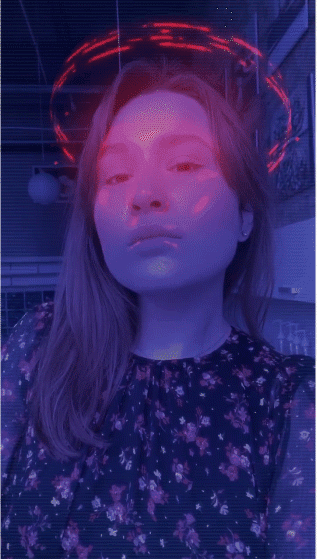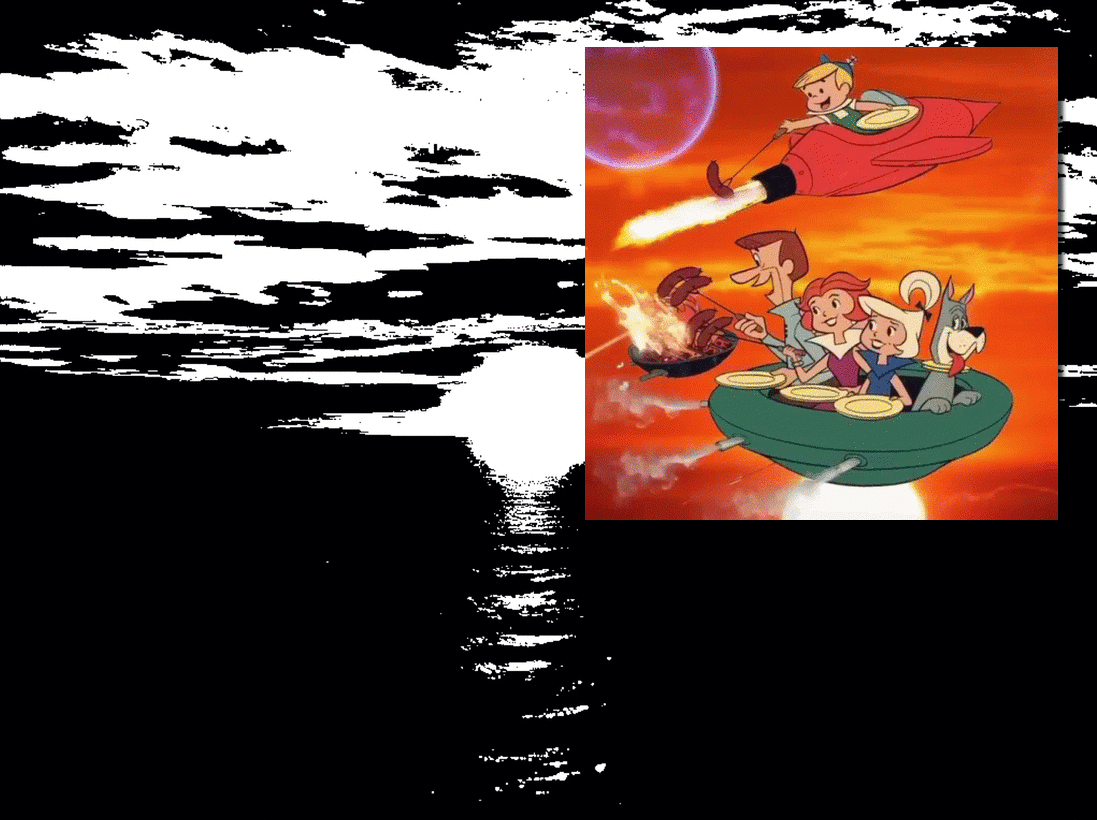 On the Burnout of Future-Images: How the mass phenomenon directly reflects the troubles of our cultural imagination. In his book The Image of the Future (1961), Dutch sociologist Fred. L. Polak (1907-1985) explains how the historical process of time – and along with it, speculations on the nature and meaning of time…
On the Burnout of Future-Images: How the mass phenomenon directly reflects the troubles of our cultural imagination. In his book The Image of the Future (1961), Dutch sociologist Fred. L. Polak (1907-1985) explains how the historical process of time – and along with it, speculations on the nature and meaning of time…
Dude, Where’s My
22nd Century?
Originally published in MARCH Journal of Art & Strategy.
An overlap has emerged between the experience of temporality in the contemporary condition of burnout, and time-flow in relation to social change. There is an intervention to be done. One that speculates on how these two apparently separate concepts have begun to converge, revealing potentially exciting qualities about one another.
In his book The Image of the Future (1961), Dutch sociologist Fred. L. Polak (1907-1985) explains how the historical process – and along with it, speculations on the nature and meaning of time – has been a great concern to thinkers from Marx and Hegel to Spengler and Sorokin. The general idea has been that time flows from the past to the present and into the future ahead (past > present > future). This assumes that time’s arrow is real and headed toward “the future” and that time cannot be reversed or stopped (although it can be directed to a significant extent by human intentions and activities).1 Although various thinkers have developed their own theories on the flow of time and predictions of the future, time-flow has predominantly been addressed in this one-directional fashion. What has been missed is the dynamic interaction between the future with the past and present. Polak added the concept of completed and noncompleted time to our understanding of the historical process. This new dimension of temporality relates to how we regard, shape, and form not only the notion of the future but also the images created about the future.
By adding the interaction of completed and noncompleted time into the time-flow equation of the historical process (and thus to its relation to the future), Polak introduces the idea of social change as a push-pull process “in which a society is at once pulled forward by its own magnetic images of an idealized future and pushed from behind by its realized past.”2 It’s this push/pull tension which causes increasing strain on today’s distressed subject. As the individual experiences an ever-growing sense of acceleration provided by technological developments (new media and the “speeding up” of the infosphere) alongside a general decrease in security of past provisions and expectations (read: precarity, freelance positions, housing shortages, and increasing wealth disparities coexisting with rhetoric of infinite opportunity and limitless possibility for entrepreneurialism), the person who was historically “poised on the dividing line between past and future” (who was deemed “the unique bearer and transformer of culture”3) becomes paralysed with the responsibility of the task.4
Polak’s ideas align quite spookily with how time is experienced by a person suffering from what we have come to call “burnout.” One of the recurring similarities from anecdotes of burnout is a sense of temporal inertia – a kind of suspension of that time passes both achingly slow (similar to the temporal experience of the depressive where “a day feels like a year”5) and freakily fast (the month/s of prescribed “sick leave” from work flies by). This is a sort of hauntology for the burnout-ee; the completed past and noncomplete present lurks over the everyday experience (in tones of guilt, failure, somatic pains, and inability to act), which lies in tension with the pull, the promise, the pressures and seemingly infinite possibilities held by the future (the noncompleted present bleeding into the also incomplete, immanent, and potential future). Within this two-directional tug lies a parallel narrative – that of feeling “too wired to relax, too tired to act.” In a word, inert.
Could it be that the era of mental clarity from which Polak writes, as a healthy citizen of two worlds – the present and the imagined – has ended in burnout? Have the present and imagined converged so far into one muddled time-sensed paralysis that we can no longer conjure any image of a future, let alone an attractive one that could provide a magnetic pull forward?
Out of this Antithesis the Future is Born.6
According to Polak, “every man leads a double life.”7 For Polak, this dualism was the indispensable prerequisite for the movement of events in time and for the dynamic of historical change. However, today “a double life” seems an understatement. With the quick development of digital technologies in the last decades, how many lives has this led us to lead – simultaneously? How do we (ac)count (for) the myriad of selves we manage across platforms, spaces, profiles, and interfaces? For us, these “lives” have multiplied over time: the Facebook Self differs from the LinkedIn Self as does the Professional Self of the office calendar, in contrast to the Imaged Self on Instagram or the Quantified Self on one’s FitBit. Within this intense fracturing (and inherent labor), the idea of a “double life” seems romantically simple. It is no wonder that under the influence of these pulls, tensions, and clashes (in addition to the supposed responsibility for cultural “transformation”) we become unable – and dis-abled – to cope, let alone act.
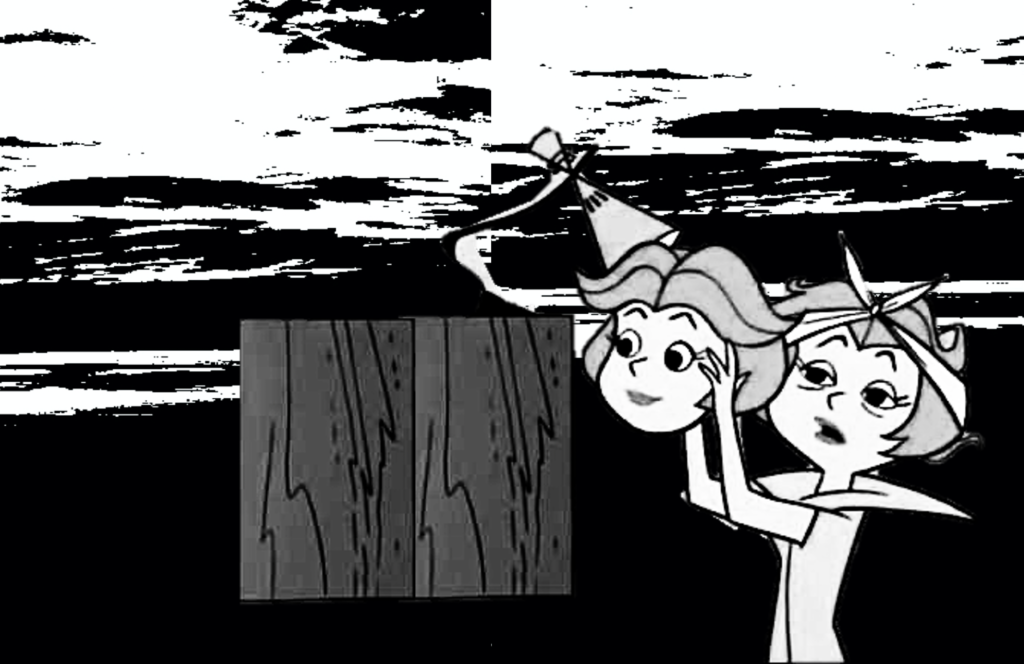
Collapsing under the pressure of time-flows between completed and noncompleted time, a person’s ability to imagine the future falls away. While wrestling with the past and dealing with the present, concern for the future – any future – pales in comparison to making it through another day. Imagination requires energy and the mental capacity (space and time) to dream. With unrelenting pressure to get by, perhaps to make it, to somehow deal with seemingly infinite possibilities and opportunities (which become infinite pressures unto themselves), it is no wonder that we are short on new images, new image-makers, of the future – beyond apathetic anticipation of demise. What justifies our attention and consideration? Where might we dare place our hopes?
According to Polak, the future has always “attracted man’s dreams, hopes, and fears.”8 For Polak it is the future, rather than the past, that is “seen as holding the key to the riddle of existence.”9 We, however, are preoccupied and tormented by the haunting of what was and by the eternal Long Now.10 We are so burnt out from surviving the present (and the lingering past) that considering what could be seems but a naïve hobby – one that, ironically enough, few of us have time or energy for.
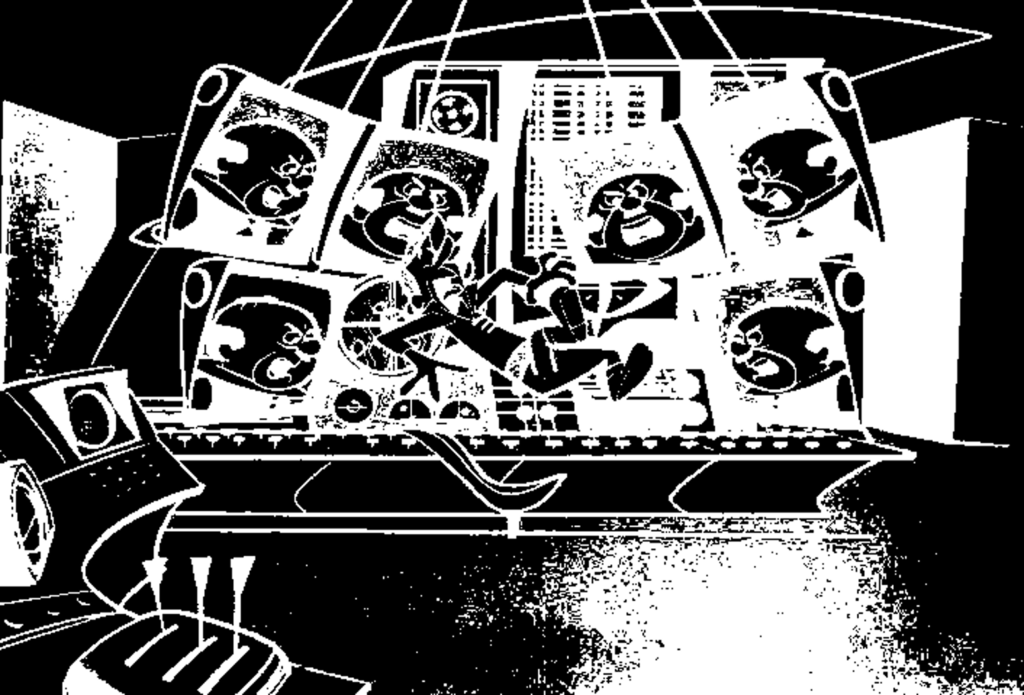
The Boundless Future
“…it is only by drawing boundaries in the thought-realm that man can produce a problem that can be grasped and worked with, and it is only by redrawing the boundaries of the unknown that man can increase his knowledge. No problem so persistently defies our skill at drawing boundaries as the problem of the future, and no problem presses quite so hard on our intellectual horizons.”11
The future is a domain without boundaries. If we take a moment to unpack what Polak is saying here, we can extend the thought experiment into another area for consideration.
Firstly, Polak suggests that “drawing boundaries in the thought-realm” is a prerequisite for identifying problems that can then be “grasped and worked with.”12 This preludes the increase of knowledge, as it is the redrawing of boundaries of the unknown which leads to new knowing. However, the future presents a problem when it comes to drawing boundaries, given that it has none. The future is boundless. This is daunting in and of itself – the drawing of boundaries within the boundless is no easy feat. In fact, Polak says, “No problem presses quite so hard on our intellectual horizons.”13Confronting the unknown, pondering its existence, contemplating any boundaries that could be drawn whatsoever, might just be pressing a little too hard on our psyches at the moment. Perhaps the drawing of a boundary across the infinite unknown intensifies the already burnt-out state of our lives, and is asking too much of those merely trying to survive.
Additionally, this scene is not without its authoritarian tendencies. Both the harsh whispers of the Puritan work ethic and the desperation of children not to disappoint their parents (neither new nor insignificant) emphasize that in exploring their own future, humans have always been stalked by a sense of doing the forbidden. The consequences of the sin of hubris, of challenging the omnipotence of the gods, was well known and dreaded by the Greeks. Today’s hubris takes on a different meaning in the contemporary vernacular akin to arrogance or being overly self-assured. Hubris is exaggerated self-confidence. Today’s dominant platforms (particularly social media) are nothing if not 24/7 stages for hubristic displays. It is the trait we most admire – and most abhor. It is also a great tool for keeping up appearances – which itself requires a huge amount of (exhausting) emotional labor. These performances of hubris, however, diverge completely from the task of drawing and redrawing boundaries of the unknown. They may, in fact, distract us from it.
The Futureless Present
“Eventually, man emancipated himself from the picture-writing of the gods and created new images, sometimes in terms of the will of God, sometimes out of his own humanistic striving. Once he became conscious of creating images of the future, he became a participant in the process of creating this future.”14
Around the time of publication of Polak’s book, and in the successive decade of the 1970s, there was an explosion of creative and artistic output that produced images of potential futures – think of the rise of science fiction literature in works by Octavia Butler, Isaac Asimov, J. R. R. Tolkien, Ursula Le Guin, and Philip K. Dick, and films such as Alien, A Clockwork Orange, Solaris, Star Wars, Westworld, and Soylent Green. This period has been addressed by Franco Berardi, and later by Mark Fisher, as “the slow cancellation of the future.”15 Berardi surmises that this began back in the ’70s when the brakes were applied to the idea of a “progressive modernity” that had shaped Western worldviews for at least a century. From a cultural perspective, Fisher contrasts the cultural energy of the 20th century with the languors of the 21st:
While 20th century experimental culture was seized by a recombinatorial delirium, which made it feel as if newness was infinitely available, the 21st century is oppressed by a crushing sense of finitude and exhaustion. It doesn’t feel like the future. Or, alternatively, it doesn’t feel as if the 21st Century has started yet.16
Fisher goes on to attribute the lack of (new) cultural production to a lack of space, time and energy to produce:
It’s no accident that the efflorescence of cultural invention in London and New York in the late 1970s and early 80s (in the punk and post-punk scenes) coincided with the availability of squatted and cheap property in those cities. Since then, the decline of social housing, the attacks on squatting, and the delirious rise in property prices have meant that the amount of time and energy available for cultural production has massively diminished.17
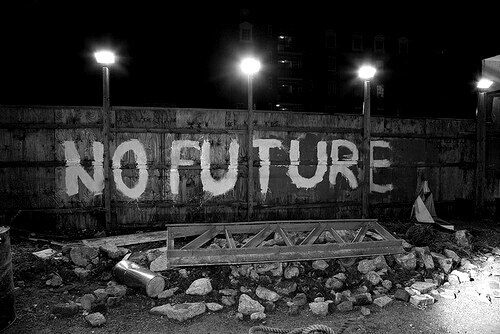
In an essay titled “Memories of the Future,” Ross Wolfe addresses the crisis of “no future”18 founded on what he calls “the utopia of normality.”19 In the context of the COVID-19 pandemic, this utopia continues to maintain itself as a central goal. One holds onto an aspiration for back to normal (although the desirableness of that version of the present has come under question as well) and thinks of recent events as mere hiccups and minor diversions in the greater scheme of things. Rather than think ahead, Wolfe argues, our instinct is to turn to the past. “Those for whom the present of just a short time ago already seemed to be charting a disastrous course, however, are compelled to imagine a still more remote past: a past that humanity might someday revisit, after completing its long journey through the wilderness of modernity.”20 He adds to the idea of “slow cancellation” by asserting that:
Today it is well known that the future has become a thing of the past. Gone are the days when humanity dreamt of a different tomorrow. All that remains of that hope is a distant memory. Indeed, most of what is hoped for these days is no more than some slightly modified version of the present, if not simply the return to a status quo ante — i.e., to a present that only recently became deceased.21
It feels like the answer to the question of Where are we going? is nowhere. If these former decades (particularly the aforementioned era of the ’70s with its creative plentitude) were “lunging headlong into the future, outstripping every prognosis and expectation,” then how present were those presents?22 When the velocity of a moment increases and immediately finds itself “right back where it started,” then the temporality of a speeding present verges on the cyclolinear. Just like a treadmill. Just like a hamster wheel. Just like any psychic apparatus running with the sense that simply getting off is no longer an option. Until burnout. Referencing Moishe Postone’s 1996 book Time, Labor, and Social Domination and Spencer Leonard’s 2009 essay, “Going it Alone: Christopher Hitchens and the Death of the Left,” Wolfe writes:
The ceaseless proliferation of the new now presents itself as the eternal return of the same old, same old. Novelty today has become quotidian, if not wholly antique. It should thus hardly come as a shock that Marxian theorists like Moishe Postone have described a peculiar treadmill effect that occurs under capitalism. History of late may be going nowhere, but it’s going nowhere faster.23
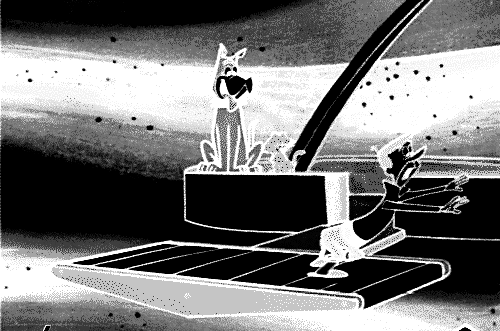
Disappointment and Despair
Another explanation for the apparent lack of future-images is offered by David Graeber’s essay “Of Flying Cars and the Declining Rate of Profit.”24 Graeber argues that this apparent apathy is in fact the result of a certain disappointment. Graeber posits that the ’50s and ’60s promised all sorts of stirring technological futures, from space exploration to flying cars (as a child raised watching The Jetsons, it remains hilarious to reflect on this being the vision for what the year 2000 had in store for us), and we ended up with… computers. “Had the Internet been described to a science fiction aficionado in the fifties and sixties and touted as the most dramatic technological achievement since his time,” writes Graeber, “his reaction would have been disappointment.”25 In the same collection of essays from The Baffler Ann Friedman writes, “We expected teleportation pods, antigravity sleds, and immortality drugs. We got LinkedIn, which…is an Escher staircase masquerading as a career ladder.”26
Fisher echoes this same (disappointed) wonder with regard to the ’70s and what came after – not, however, as an expression of bereavement, but rather as a reproach of “the formal nostalgia of the capitalist realist world”27 and evidence of a long squeeze on social democracy. “What should haunt us is not the no longer of actually existing social democracy, but the not yet of the futures that popular modernism trained us to expect, but which never materialised.”28

22nd Century?
While Fisher meditated on this particular spectre of lost futures, another author, from the future oriented sci-fi genre, was considering this absence from a lingual line of questioning.
It’s true. When did you last hear the phrase “the 22nd century”? As early as 2016, legendary sci-fi novelist William Gibson has pondered the absence of concern for the future in culture, extrapolating the trend into semantics:
In a 2020 article from The Conversation, Gibson coined the term “future fatigue,” a condition “where we have grown weary of an obsession with romantic and dystopian visions of the future. Instead, our focus is on now.”29 Speaking to BBC Radio 4 in January 2020, Gibson attributes this loss of interest in the future to a loss of belief in it.30 Too burnt (out) by disappointment from both what is and what could be (which when given brief thought only appears to be no better than dealing with today), our lack of imagination (our lack of image-making, of boundary-drawing, of daring to consider what could be held in the vast unknown) might be darkly correlated to (or at least factor of) our immobilizing inertia. Suspended in the Long Now, we are paralysed between an overhanging past and the supposedly limitless opportunities before us. We are preoccupied with surviving today, while disappointment and crushed “prospects” abound, inhibiting our ability to dream beyond tomorrow.
One might argue there are plenty of future-images being generated. Every week there is a new apocalyptic film set in a near or distant future streaming on any given platform. (Need we mention Black Mirror?) Instagram filters like “The World of Tomorrow,” “Neon Dystopia,” or “Digital Decay,” can turn any selfie into a post-humanist work, though most augmentations of this variety tend towards cyberpunk pastiches rather than really new future-images. VR experiences promise to transport us into alternate realities, however, most to this day are mirrored from Star Trek’s fictional technologies in order to replicate what “future entertainment systems could look like.”31 Meanwhile, billionaires are providing the world with recycled renderings of new colonies for the 1%. Peter Thiel, a self described anarcho-capitalist, presented his “seasteads,32 which look like something straight out of a PS2 game. Or Elon Musk’s SpaceX program Starship rocket that, again, looks pretty much like any other space rocket.33 Then there is Jeff Bezos’ “Blue Origin” floating space colony, but Elysium is already on Netflix when you want it.34 In other words, what do we see that is not dystopian or simply a technologically updated rehashing of futurisms as dreamed by past generations?
Who is showing us the 22nd century? Are we simply too despairing of what we might see? If social change is a push-pull process “in which a society is at once pulled forward by its own magnetic images of an idealized future and pushed from behind by its realized past,” without a magnetic pull from the front, how are we to move out from the stagnation? The mass phenomenon of the burnout directly reflects the troubles of our cultural imagination. These time-flows have us in their talons.
This article originally appeared in MARCH Journal of Art & Strategy in February 2021.
MARCH embraces publishing as an act of protest to address the critical social and political issues of our time. Visit here to find out more.

